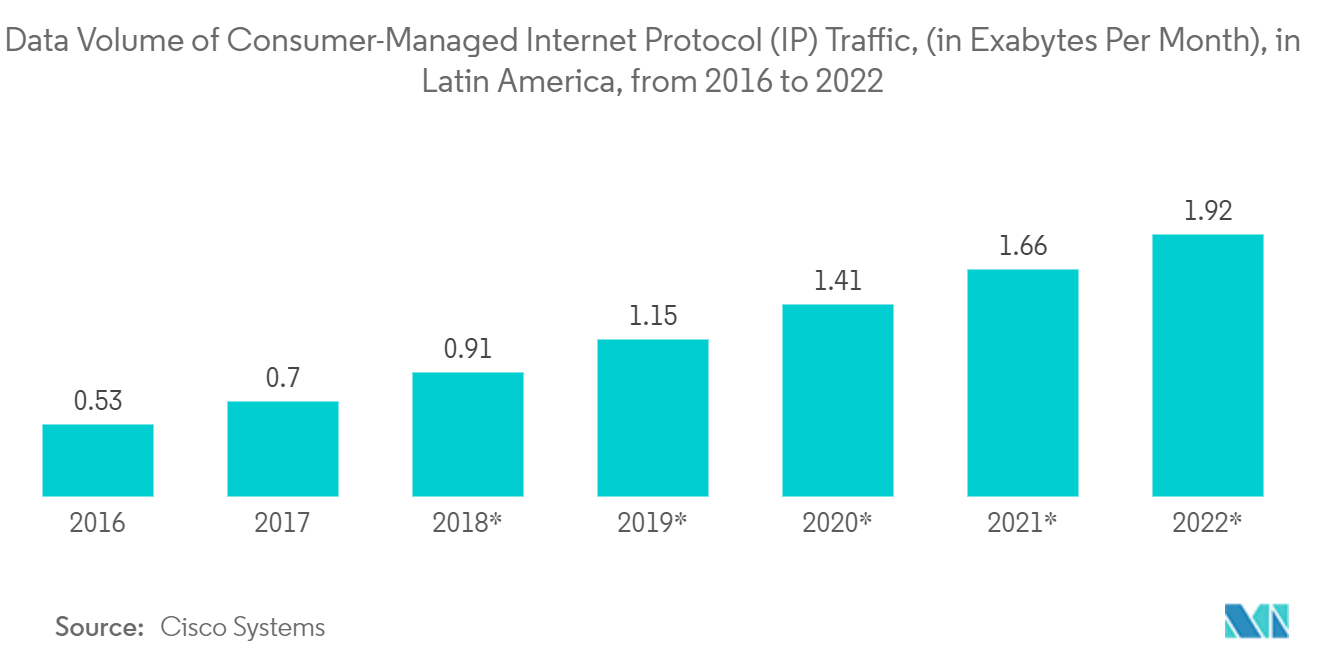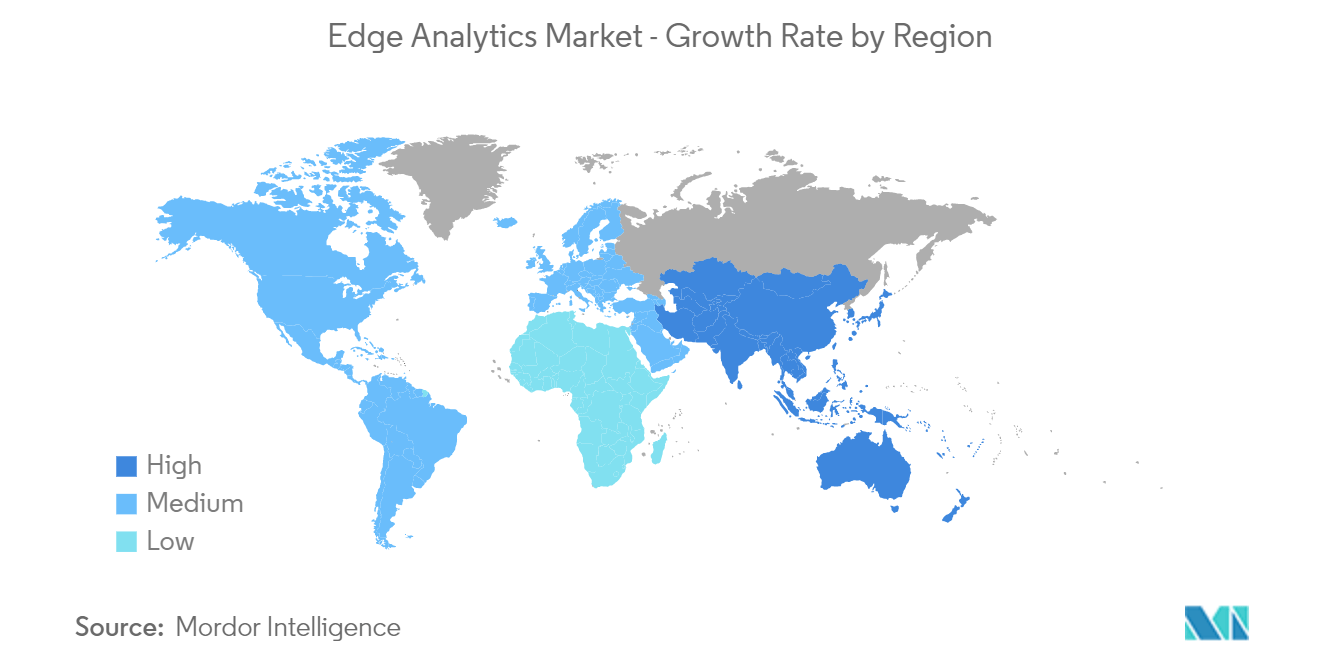Market Trends of Edge Analytics Industry
Rising Propagation of Data Over Connected Devices Drives the Market Growth
- The need for Edge Analytics is further driven by the massive amount of data generated on everyday, which is stored on the cloud. According to Cisco Systems, the data on consumer-managed Internet Protocol (IP) monthly traffic in Latin America was 0.7 exabytes per month in 2017, expected to grow to 1.92 exabytes in 2022.
- According to Errision, Monthly data traffic through fixed wireless access (FWA) was measured at 16.6 exabytes in 2021, up from 9.7 exabytes in 2020. Strong growth is expected over the coming years, with monthly FWA data traffic forecast to reach almost 130 exabytes by 2028. FWA is a technology enabling a fixed broadband connection via 5G, 4G, or 3G and can provide broadband connections in areas with limited infrastructure. FWA data traffic outstripped that of 5G mobile connections in 2021, though 5G mobile traffic is expected to surpass FWA traffic by 2024.
- Moreover, a large amount of data is stored on the Edge, and Seagate estimates that the IoT devices will generate more than 90 zettabytes of data by 2025. Data readiness is expected to be critical for next-generation technologies like IoT, AI, and blockchain.
- Also, the edge analytics capabilities of automatic analytical computation of collected data in real-time, instead of sending the data back to the centralized data store or server, will be the core of new concepts, like smart cities, due to which increased investment in smart cities technology is expected to boost the market for edge analytics that will provide faster and responsive services to end user.
- Edge Computing has been in the technological space for some time, surging network performance. Due to edge computing, data analytics partly relies on the network bandwidth to save data close to the data source. Also, edge computing makes data handled and stored away from the silo setup closer to end users, with processing in the device, the fog layer, or the edge data center.

North America is Expected to Register the Largest Market
- The United States remains a prominent market for Edge Analytics due to the increasing acceptance of edge analytics among small and medium-scale firms, supported by government regulations and compliance. Additionally, the significant growth of the edge analytics market can be attributed to the high concentration of manufacturing and telecommunication industries that majorly adopt edge analytics services. The demand for edge analytics is directly related to cloud traffic. Due to the huge increase in cloud traffic, significant growth in the market can be observed.
- North American Insurance companies are changing the way they utilize cloud computing. While both property & casualty and life insurers have employed the cloud to increase agility, increase operating efficiency, attract new talent and reduce operating costs, there is an emerging trend in insurers viewing the cloud as a business asset. Cloud operations cost can be significantly reduced by using a distributed edge computing architecture, where edge devices together process a critical operation, which a cloud device cannot process independently, thereby reducing cloud dependency.
- Also, significant growth in sensor technology can be witnessed in the region. By combining sensor technology innovations with reducing hardware costs, the edge-to-cloud paradigm can be established. Sensors with processing units can help take critical actions in an inconsistent cloud environment and later synchronize with the cloud.
- Canada is known to be an early adopter of new technologies. Most new technologies at present are data intensive. They create, process, and transfer large amounts of data, due to which the current infrastructure, consisting of data centers and the cloud, is inching toward its maximum capacity.
- With the amount of new data generated and used at present, these infrastructures won't support the needs of their customers. Of all the parameters involved, latency will be the most crucial factor for the business.

